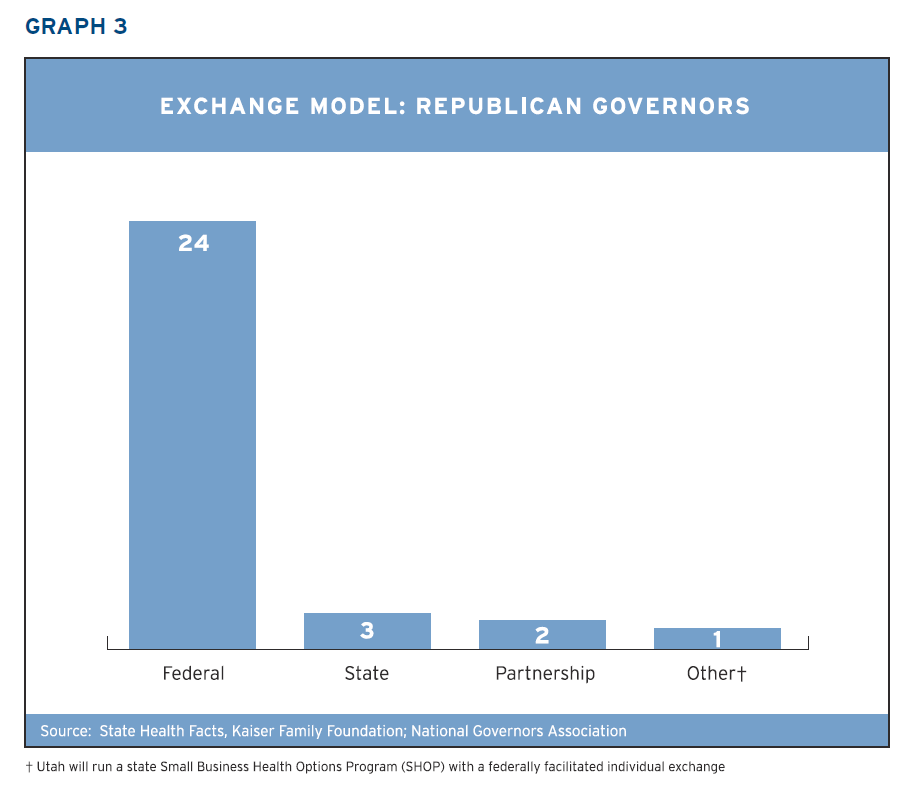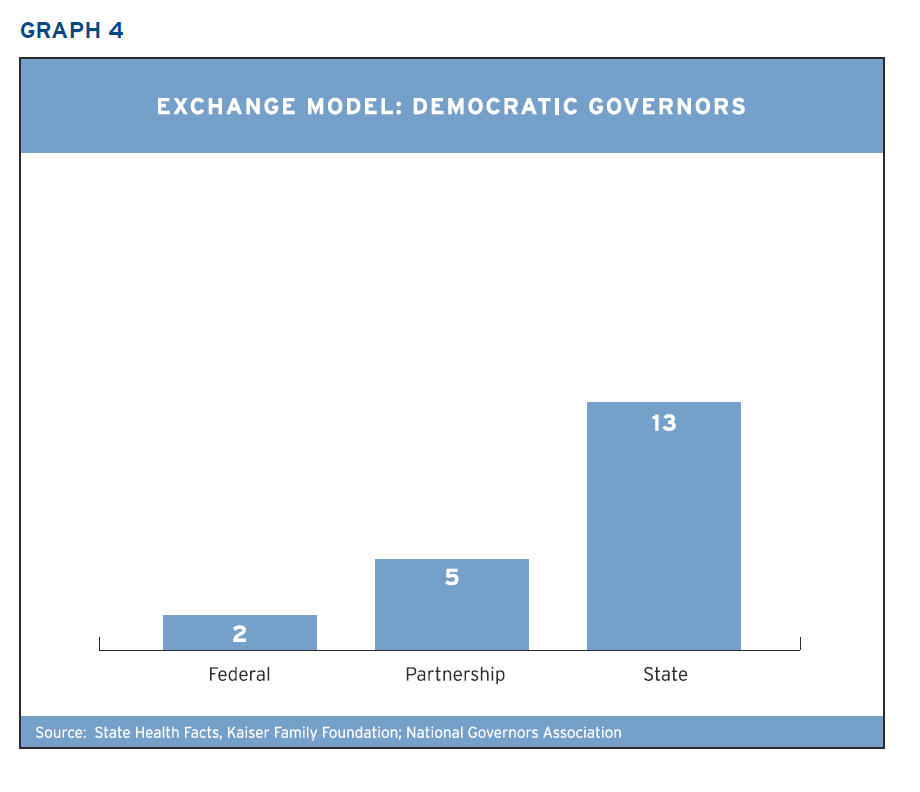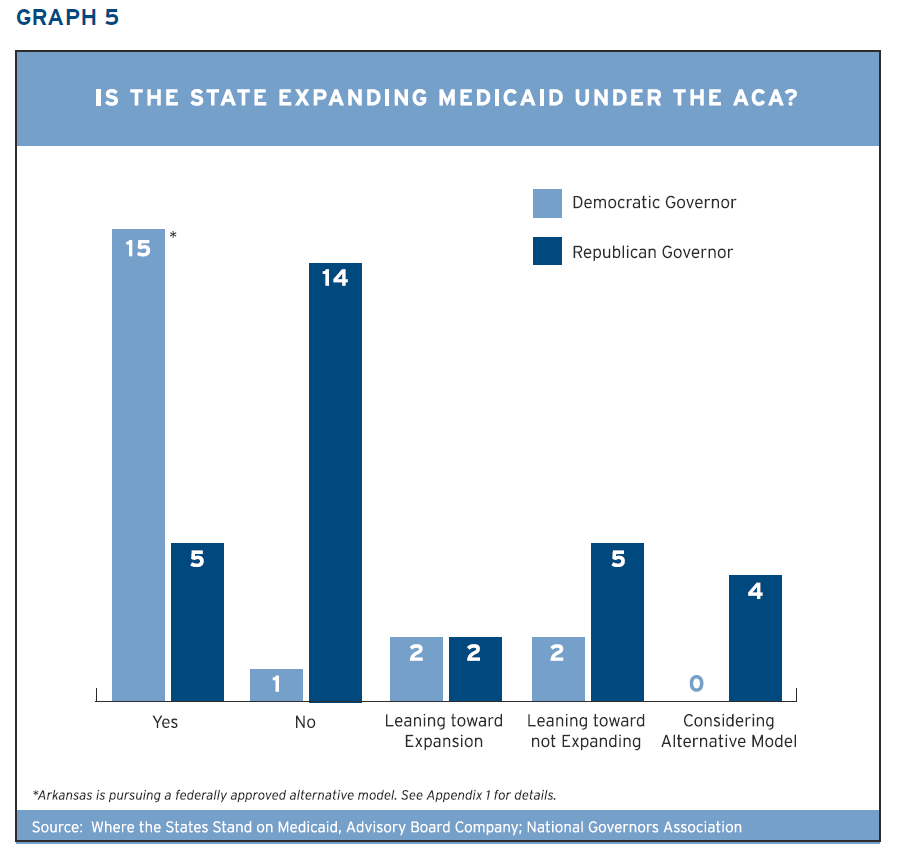Editor’s Note: The effectiveness of the Affordable Care Act depends largely on the manner in which it is implemented in the states. In general, Democratic and Republican governors have opted for very different implementation strategies, and those differences offer a means of evaluating the quality of various aspects of the law, say Sheila Burke and Elaine Kamarck in a new study. Below is an excerpt from their paper “The Affordable Care Act: A User’s Guide to Implementation.” To view the full paper, click here.
Given the polarized nature of the health care debate, it is not surprising to learn that the decision to create or not create an exchange was an overwhelmingly partisan decision. Graph 3 shows the choices of Republican governors when it came to implementation of the new law. Almost all the Republican governors chose to leave the operation of the exchanges to the federal government. The exception was Utah where, as indicated above, the governor decided to set up a small business exchange but leave the individual exchange to the federal government. In Iowa, the Republican governor opted for a partnership with the federal government as did the governor of Michigan. Nevada, Idaho and New Mexico were the only states where Republican governors opted to create a state-run exchange.

A look at the choices of Democratic governors yields almost exactly the reverse conclusion. Most of the Democratic governors opted to create their own state exchanges, as Graph 4 illustrates. The only states led by Democratic governors that opted for the federal exchange were Missouri and Montana. The remaining Democratic governors opted to create some sort of partnership with the federal government.

The second key decision that governors had to make regarding implementation of the ACA came as a result of the Supreme Court’s decision in National Federation of Independent Businesses (NFIB) vs. Sebelius, handed down on June 28, 2012. In deciding the issue, the U.S. Supreme Court determined that because the expansion was a significant change in the Medicaid program — in the words of the Court a change in “kind” not merely “degree” — it constituted a “new program.” The Court also noted the size of the expansion in terms of state budgets and the lack of notice given states about Congress’s intention to make Medicaid a central element of a comprehensive system of national health reform. For these reasons, the Court held that withholding all Medicaid funding from states that fail to enact the expansion was unconstitutional, though it left the expansion in place as a state option.
Thus governors had to decide whether or not to expand the Medicaid program. As Graph 5 illustrates, this too turns out to have been a partisan decision — with the majority of Democratic governors opting to expand Medicaid and the majority of Republican governors opting not to. However, these decisions were less partisan than the exchange decisions — more Republican governors decided to pursue the Medicaid expansion and there were other Republican governors who would have expanded it but were prevented from doing so by their legislatures. (For a complete listing see Appendix 1 [of the full paper])

Because Democratic governors tended to opt for state exchanges and for the expansion of Medicaid, these states will prove to be the purest test of the thinking behind the ACA since they will do two of the most critical things anticipated to increase coverage.
Note: The complete text of “The Affordable Care Act: A User’s Guide to Implementation” is available here.
The Brookings Institution is committed to quality, independence, and impact.
We are supported by a diverse array of funders. In line with our values and policies, each Brookings publication represents the sole views of its author(s).



Commentary
Affordable Care Act Implementation and the Consequences of Governors’ Partisanship
October 17, 2013